When Melissa Oliveira's son, Gibson, was struck by a vehicle near the intersection of Stanford Avenue and Escondido Street shortly after school got out on Sept. 8, the reaction from the parent community was swift, loud and persuasive.
Over the next two weeks, Oliveira and other Escondido Elementary School parents — mostly moms — submitted emails and attended public hearings to lobby the city and Palo Alto Unified School District to implement various safety measures to protect their children from cars.
The wish list included installing a crossing guard in front of Escondido, modifying traffic signals and exploring new policies to get children away from the sidewalk where they congregate before school starts and inside the school gates.
The surge of constructive outrage proved effective. Within days, officials from the city, the school district and Stanford University, which is adjacent to Escondido, toured the site to evaluate conditions and discuss solutions.
On Sept. 21, the day after the site visit, a committee of City Council members and school board members heard testimony from a group of concerned parents, including Oliveira, urging action. Jill Paldi, president of Escondido School PTA, said the community is asking for improved safety so that parents can feel confident sending their kids to and from school.
"Having a main entrance of PAUSD's largest school on this busy thoroughfare is unacceptable," Paldi said. "In fact, it's an incredible liability and we need an immediate solution."
Oliveira suggested that the traffic patterns may have been partly to blame for what happened to her son. The intersection of Escondido has two crosswalks, which form an L-shape. The traffic lights pattern is set up to give a long green light in the morning, allowing students to get through both crossings without stopping.
It's also not uncommon for someone crossing to take a diagonal route across Stanford Avenue, which is what Oliveira said her son was doing when he was hit by a car that she said threw him 10 feet and "rag-dolled him across the street."
"So unfortunately that happened, but he had his helmet on and it saved his life, and it's a miracle," Oliveira said.
City staff and members of the City/School Liaison Committee, which consists of council and school board members, signaled that they plan to act quickly. City Manager Ed Shikada said staff is "poised to be able to take actions quickly" and Council member Pat Burt talked about the need to "push aside any bureaucratic barriers that might normally exist so that we can make them happen quicker."
School board member Todd Collins concurred.
"Sometimes you have to go fast; sometimes you have to go slow," Collins said. "This strikes me as a time when we try to figure out where our go-fast ability is and see if we can have an expedient approach that addresses the need in the short term while … (giving) us time to find a longer-term approach, which we're set up to do."
They had good reasons for urgency. Six days after the Escondido accident, a middle-school-age boy in south Palo Alto was making a left turn on South Court at about 5:47 p.m. when he was struck by an eastbound SUV that got into the right lane to pass a car that was trying to turn left, according to the police. More than a week later, the boy was still in critical condition, according to the police.
The two accidents prompted Mayor Lydia Kou and Police Chief Andrew Binder to issue a joint statement on Sept. 15 listing the various actions that the city is taking to promote traffic safety. This includes having overtime traffic enforcement around schools, reviewing traffic controls and reviewing how the city deploys the roughly 30 crossing guards whose contract the Police Department manages.
"Community safety is our number one priority," Kou and Binder said in the statement. "With schools back in session, we must all heighten our awareness and support the safety of our streets."
The city and the school district reacted to the pleas and the crashes by adding a crossing guard at the intersection of Stanford and Escondido on Sept. 26. Prior to the move, the school's designated crossing guard was stationed a few blocks east of the school, at the busy intersection of Stanford and El Camino Real.
But at a Sept. 28 meeting focused on traffic safety near schools, numerous parents suggested that this move is not enough. They complained about the many drivers who misbehave as they drive down Stanford. Parents brought up instances in which bicyclists were hit or nearly hit by drivers who were either speeding, running a traffic light or simply not paying attention.
"My son was almost hit by a car at the stop light at Stanford and Escondido, and I've seen countless close calls," Nova Jimenez, who has a child at Escondido, told the City/School Transportation Safety Committee.
Police statistics also suggest that traffic collisions are on the rise citywide. Palo Alto Police Lt. Ben Becchetti reported that there were about 60 collisions in August this year, a month that he said typically sees around 40 collisions. At least six of them involved vehicles colliding with bicycles, he said.
Becchetti vowed to have a greater police presence at Escondido to both enforce traffic and to help parents and children cross the street during busy times. He noted that Sg. Ken Kratt, who is part of the department's traffic team, has been at the site several times to observe the conditions.
He also noted that Escondido is one of few schools that is not part of the department's "Adopt a School" program, which assigns officers to particular schools for patrolling during the busiest times in the morning and the afternoon. He said the department will make the change.
"There will be more police presence, and they will be out there educating and addressing the issues," Becchetti said.
IMMEDIATE SOLUTIONS
While the city has added a crossing guard at Escondido, the school district began to open the gates to the school earlier in the morning to reduce crowds of students gathering near the streets.
"We're not getting a congestion of kids, which is great," said Eric Holm, the school district's manager of facilities and construction. "We're getting them earlier so they're not out in the sidewalks."
Philip Kamhi, the city's chief transportation official, said the city has also launched in collaboration with Stanford University a "warrant analysis" to determine whether the crossing guard should be a permanent presence near the school.
The city's policy for installing crossing guards includes specific standards that consider factors such as the number of elementary school age pedestrians who use the intersection, the level of vehicle traffic, whether these areas include stop signs and traffic signals and the number of vehicle turning movements.
Kamhi told the Palo Alto Weekly that the study is expected to be completed by mid-October. While in the past, Escondido did not meet the requirements, he said at the Sept. 28 meeting that that might change.
"Even though it wasn't in the past, we're checking it again," Kamhi said. "We're doing the work to evaluate it. It could be that it's recommended … especially given the current circumstances."
The city is also taking another look at traffic signals at Escondido and Stanford, which currently have an "exclusive pedestrian" phase that allows pedestrians at this T-intersection to cross in both directions in one go during busy school hours.
Throughout the rest of the day, the signals have normal operations in which pedestrians must wait for a go signal at both lights and vehicles experience less delays.
Kamhi said that the review will look at the schedule of the exclusive-pedestrian phase so that it better aligns with the school's bell schedule.
Rafael Ruis, senior engineer with the city's Office of Transportation, said staff evaluated traffic signals after the collision to confirm that they are working as intended (they are, he said). He noted that the city is also exploring other changes to traffic signal timing to better take account of the new crossing guard who is charged with helping students get across both streets.
"A lot of times when we have a crossing guard and the exclusive (pedestrian), we try to coordinate those to operate together," Ruis said.
THINKING AHEAD
While parents have applauded the recent addition of a crossing guard at Escondido, not everyone is thrilled about some of the broader changes that are now being undertaken by the school district to address recent concerns.
One action that Holm said the district is advancing in coordination with Stanford is restriping the Escondido parking lot and changing the circulation so that there would be one lane leading into the parking entrance instead of two.
The changes, he said, will be made in the next few weeks. Once they are implemented, cars entering the parking lot from the Stanford University side will come in through a single lane and then split once they get to the parking entrance, he said.
"It will mean that there will be a change to how cars will pull in," Holm said.
This action came as a surprise to Penny Ellson, who for decades has been on the forefront of the Safe Routes to School effort, a collaboration by the city, the school district and parents to promote bike and pedestrian safety. When Ellson asked Holm what process the school district used to approve these changes, he could not provide an answer.
"When something like this happens, there's always a call for immediate actions, and that's not how we work in Safe Routes to School," Ellson said in an interview.
Like others, Ellson said that solving the problem at Escondido will require more than installing a crossing guard. It would also take engineering solutions and education. Arriving at these solutions, however, will take analysis collaboration between the stakeholders.
She suggested that the school district's recent unilateral moves to change the gate times and traffic circulation short-circuited the regular process.
"It took us probably 15 years to get to a place where in 2006 we got the school district and the city to agree to a partnership — an agreement that we'd all work in partnership together so that changes to school sites that affect circulation and bike parking an automobile parking would be reviewed by committee," Ellson said. "In this instance, the gates were closed and the collaboration hasn't happened."
School Superintendent Don Austin told the Weekly that the district deeply values student safety and is "actively collaborating with the city of Palo Alto to enhance traffic safety measures, including allocating additional crossing guards."
"Ensuring the well-being of our students involves multiple facets, such as safe crossing, student education, and monitoring of drop off and pick up driving behaviors," Austin said in an email. "We appreciate the city's commitment and partnership."
But partnerships by nature require more time deliberation, which may rankle those who demand fast action. City officials warned parents at the Sept. 28 meeting not to rush to conclusions when presenting their proposed safety measures, which included everything from eliminating parking along Stanford Avenue to adding regulations for the multi-use path along Stanford Avenue for school commuters.
"You don't need to provide the solution. You just need to tell us what the problem is," Sylvia Star-Lack, the city's transportation manager, told the audience at the meeting. "Describing the problem well may help us think of appropriate tools that maybe parents aren't aware of."
CREATING AN ACTIVE YET SAFE CITY
The big-picture solutions — including new bike lanes, traffic-signal changes and other measures — will be explored over the next two years as part of two separate but related planning efforts that the city is just now kicking off.
These two efforts, known as Active Palo Alto and Safe Palo Alto, will also both test the partnership of City Hall, the school district and the PTA community. In both cases, parents will have a chance to weigh in on what they deem to be the city's most problematic intersections and propose solutions.
Active Palo Alto is the city's update to its bicycle and pedestrian master plan, which the council adopted in 2012. The plan helped launch a series of bike-improvement projects throughout the city, including the recently constructed bike bridge over the U.S. Highway 101 and the somewhat contentious traffic circle on Ross Road, near East Meadow.
Ozzie Arce, senior transportation planner who is leading the effort, said the update will look at all of the city's biking facilities as well as recent trends such as e-bikes and micromobility, which includes scooters, electric skateboards and other lightweight modes of transportation. Active Palo Alto will also consider infrastructure solutions like new bike lanes and ways to enhance programs like Safe Route to School.
"It's recognizing that in today's world we're not just biking and walking — there's scooters and other types of facilities as well," Arce said.
Safe Palo Alto, meanwhile, focuses primarily on reducing injury collisions for all modes of transportation, including vehicles. That effort, which Star-Lack is spearheading, came out of the council's decision to endorse a "safe system" approach earlier this year.
The plan, she said, will "recommend projects and programs for all modes that will impact student safety." (Residents can learn more about these efforts, fill out surveys and contribute to an interactive map at cityofpaloalto.org/activepaloalto).
"This is really a reorientation of how to approach safety on our transportation network," Star-Lack said at the Sept. 28 meeting.
Kamhi noted that the plan will not only give the community a chance to propose new improvements, it will also allow Palo Alto to apply for grants to help implement these solutions.
"It's to steer away from preventing collisions to preventing injury collisions, but it will also allow us to compete for funding that previously we wouldn't be allowed to be eligible for," Kamhi said.
The two planning efforts offer the city and the school district an opportunity to take a more deliberative approach to a problem that everyone agrees is urgent, even as they rush to respond to immediate concerns from parents.
They will also create an opportunity to reinvigorate the Safe Routes to School partnership, which was formalized in 2006 but which Ellson believes did not work as intended in the recent Escondido debate.
She noted that the district had initially opted to keep the gates closed for longer periods of time because of concerns about campus security. While that's an important consideration, Ellson said she was disappointed that the district did not consider traffic safety concerns when making that decision.
"We need to be looking at a big picture as a team," Ellson said. "I think we need our school board and superintendent to direct their staff to collaborate with the Safe Routes to Schools team around keeping school commutes safe.
"We need to revisit the 2006 partnership resolution and maybe update it so it's relevant to what needs to be done today."
Oliveira agreed that now is the perfect time to rethink — and strengthen — the partnership involving the city, the school district and Stanford to improve safety. Oliveira said in an interview that she believes that safety for children has not been prioritized in recent years. If you talk to people at a cocktail party, she said, just about everyone has a story about a child who had been hit by a car.
After attending the Sept. 28 meeting, she said she was encouraged by the two new planning efforts that the city is now advancing. Every neighborhood, she said, should be surveying its streets and identifying hot spots so that they can be addressed in the forthcoming plans.
"I think this is a great positive momentum in the right direction," Oliveira said. "Which is to say, safety is not a political issue. But we have a lot more to do."
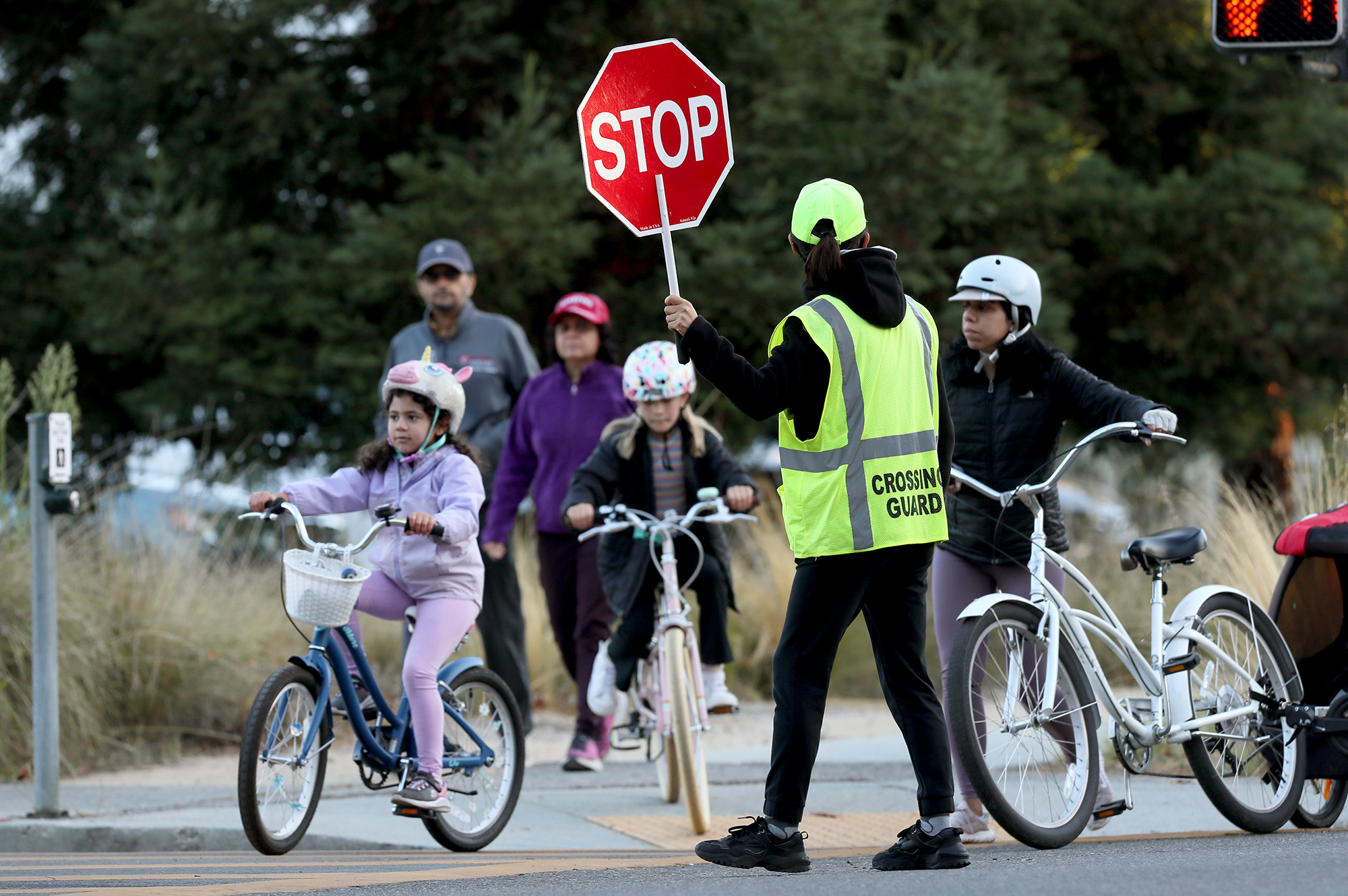
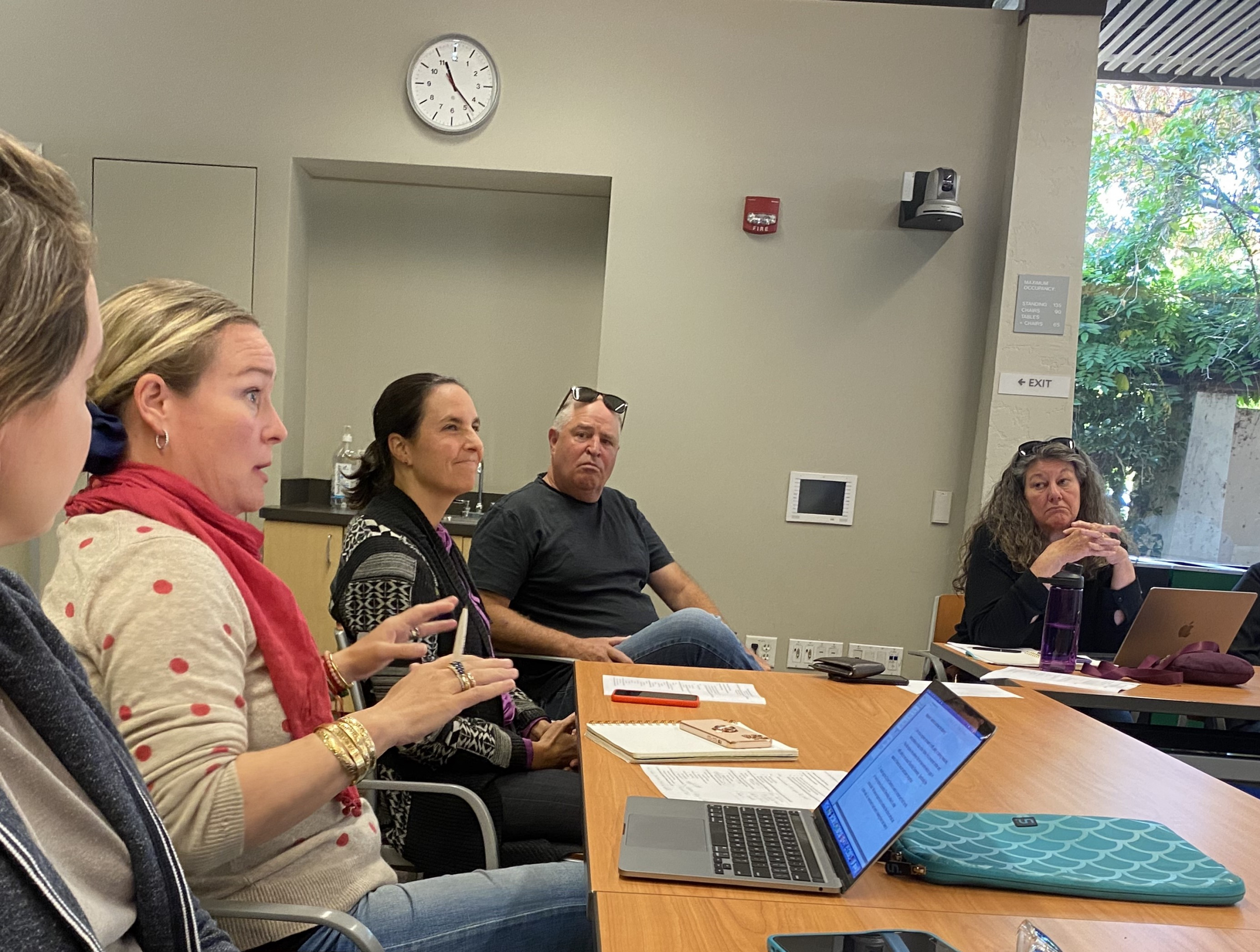

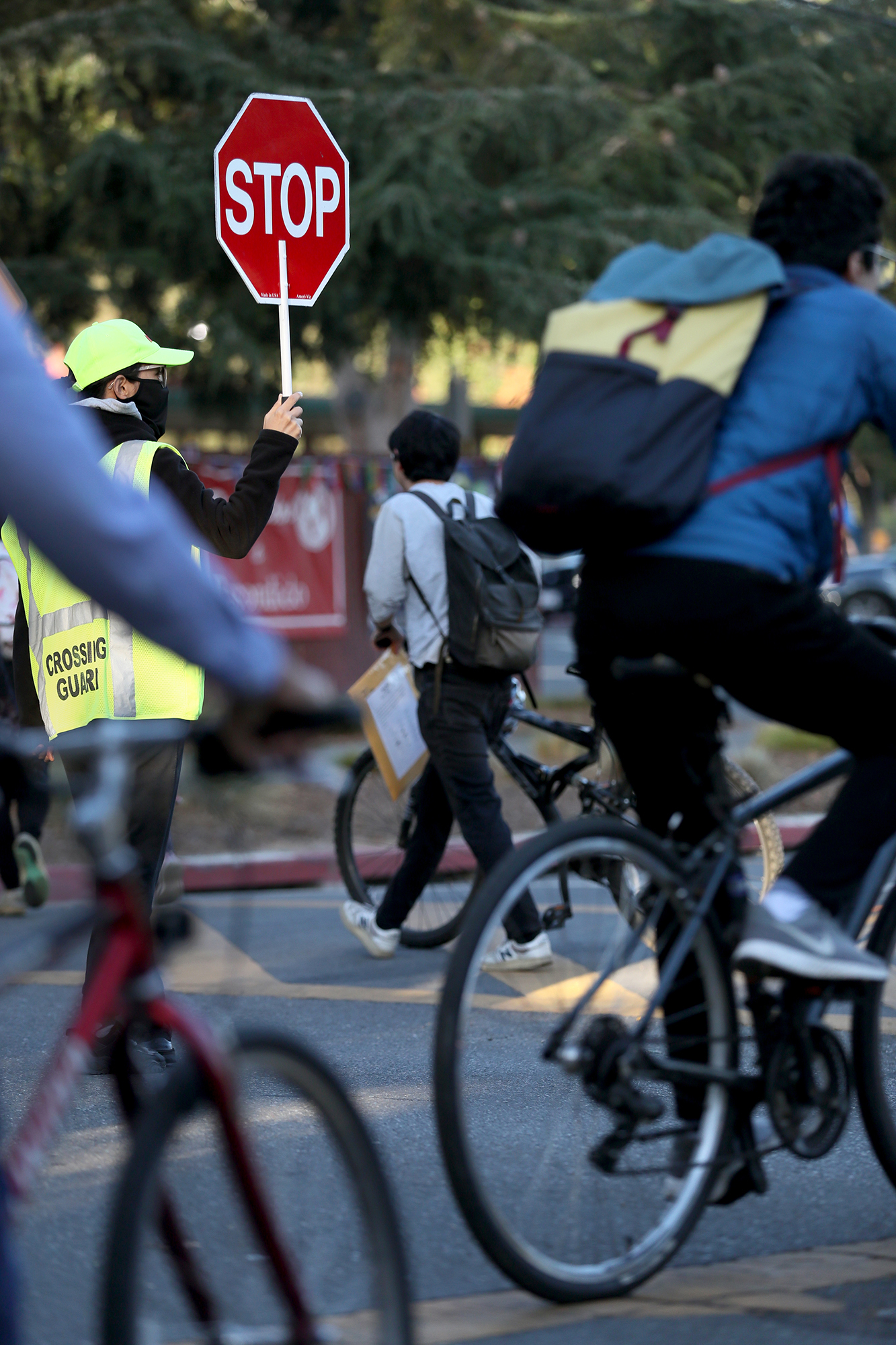
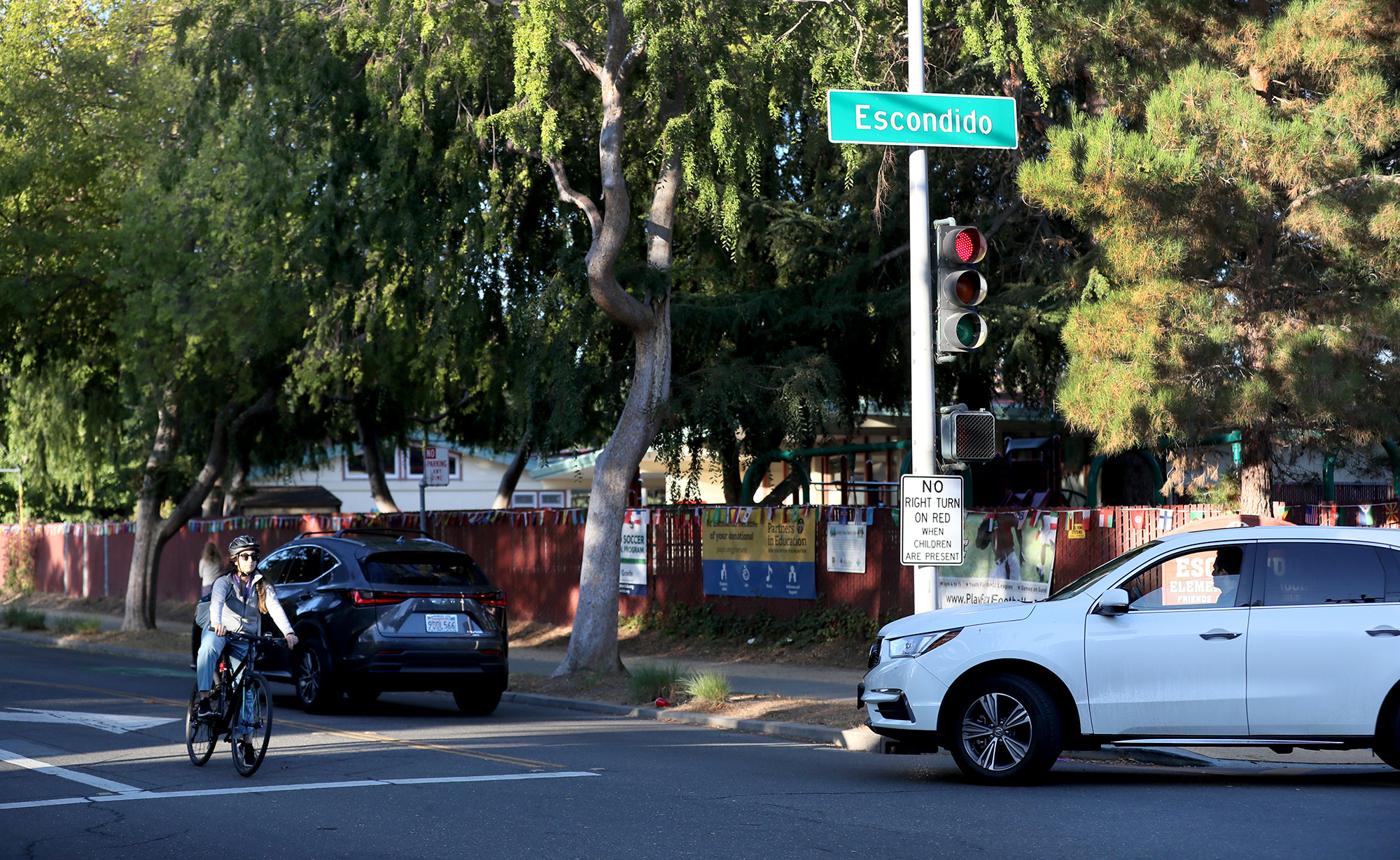
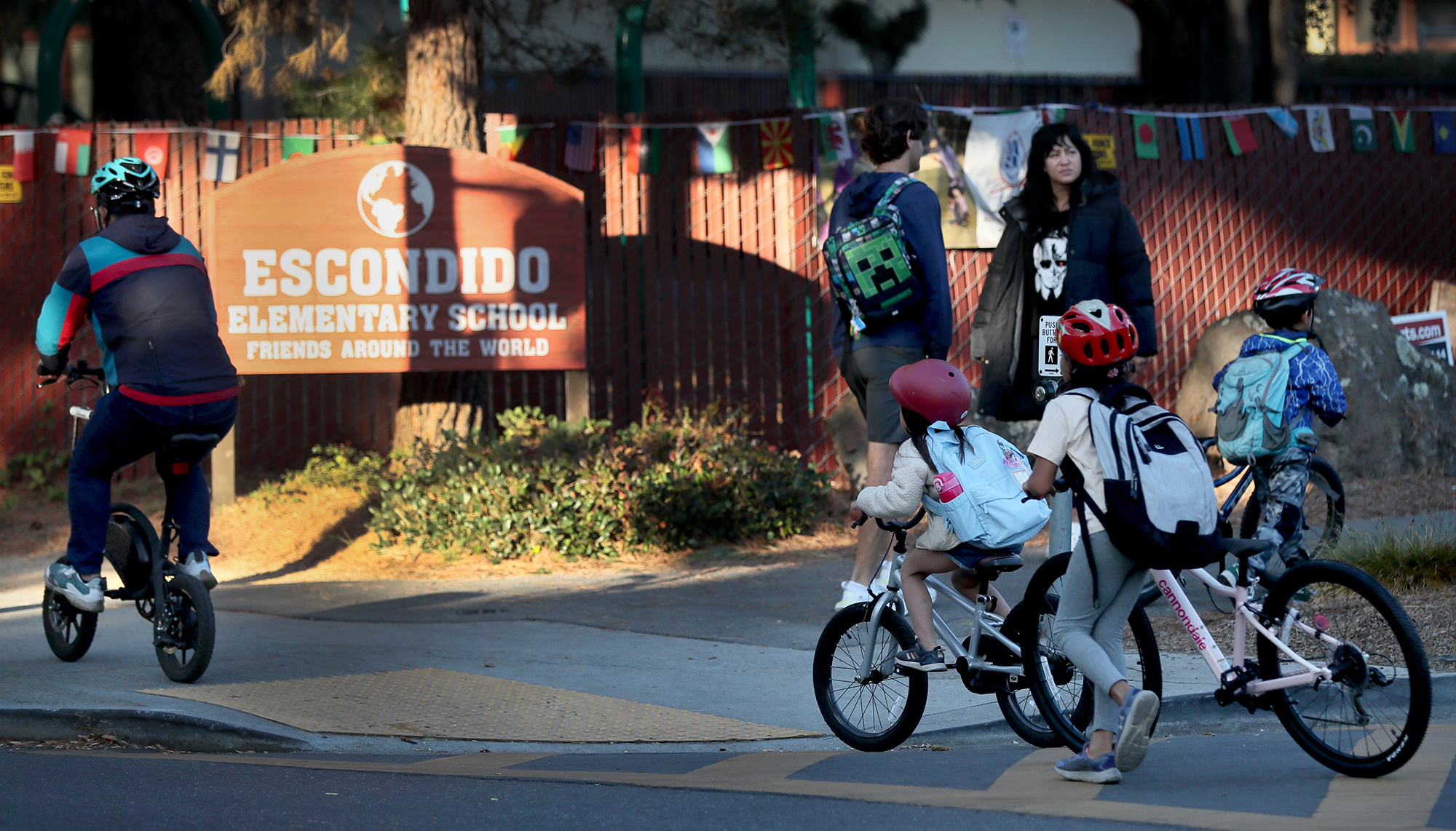
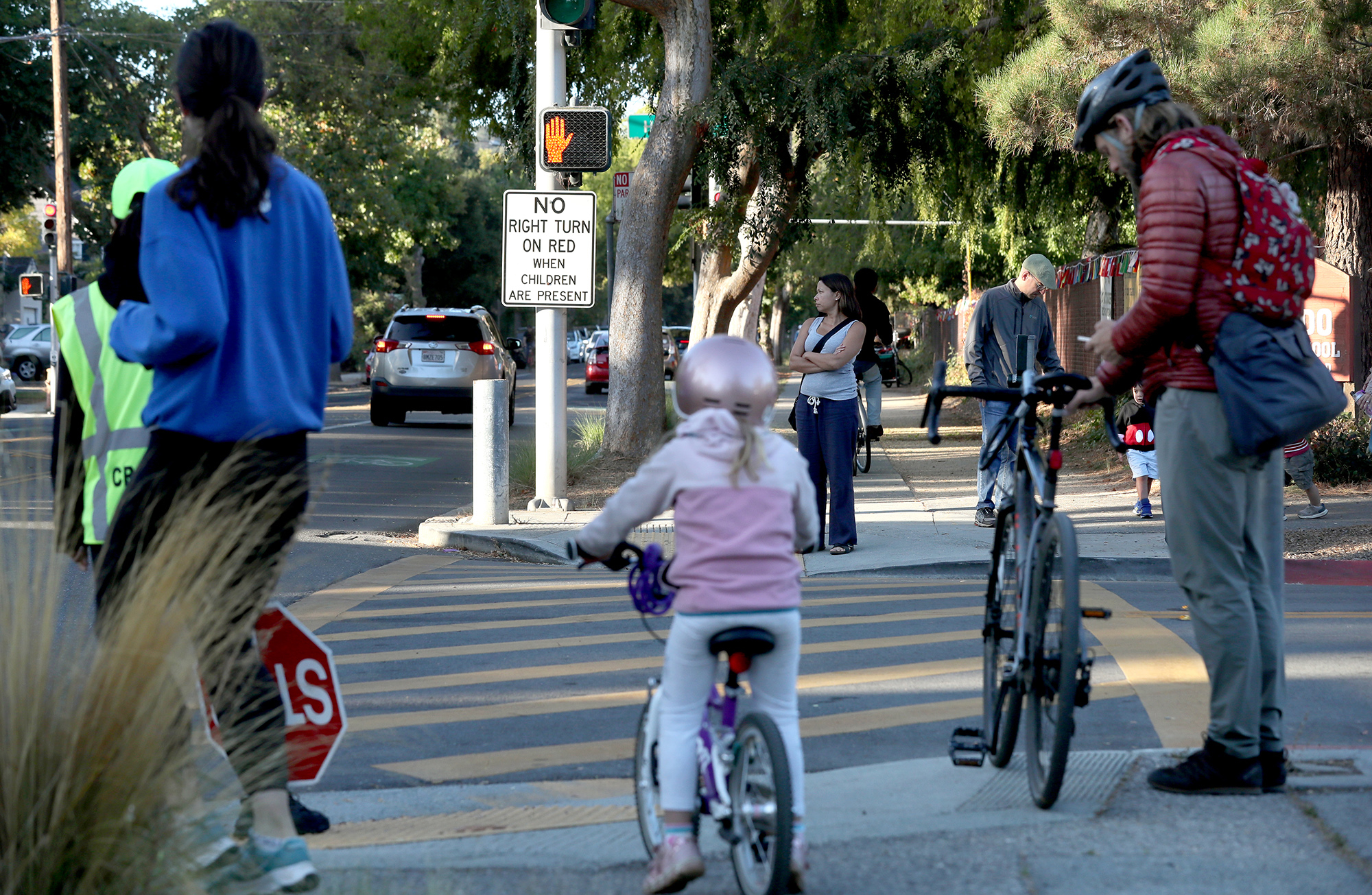

Comments
Registered user
University South
on Oct 5, 2023 at 10:11 am
Registered user
on Oct 5, 2023 at 10:11 am
Please explore what Walter Hayes does for traffic. Embarcadero and Middlefield is a major intersection. Perhaps there is something to learn from what they have done there.
Cecilia
Registered user
Old Palo Alto
on Oct 5, 2023 at 10:28 am
Registered user
on Oct 5, 2023 at 10:28 am
I recently moved away from the Palo Alto area to Grand Junction, CO. They have a policy here of slowing traffic to 25 mph in defined areas during times that children are likely to be present. There are blinking yellow lights at the beginning and end of said area. This policy appears to have been very effective, as there have been no incidents in the time that I have been here (six years.)
Registered user
Another Palo Alto neighborhood
on Oct 5, 2023 at 11:39 am
Registered user
on Oct 5, 2023 at 11:39 am
I’m sorry this happened to a child before something was done. Once it was, floodgates opened and parents described the many near misses and unsafe behavior they witnessed.
This is sadly the pattern. People see dangers, may complain sporadically, but organizing is difficult and getting big organizations to act, next to impossible, so individuals get dismissed and nothing gets done until something bad happens.
Donald and Arastradero is case in point. Many complaints about that intersection trickled off as nothing gets done. Yet daily dangers and near misses continue. It was “improved” without public comment by those most affected, subsequent complaints waved away.
The intersection is not just dangerous for cyclists at times, it’s dangerous for drivers at others. I’ve witnessed many occasions (after “improvements”) in which shear luck is the only reason kids are alive today, and why twice I myself wasn’t broadsided, even though I don’t drive much.
I’ve also witnessed specific dangerous habits by young cyclists because of how they learned to behave there. A councilmember even said to me that the way they ensure safety driving there is to ignore markings outside of school hours.
These accidents should spur action across the City before someone else is hurt or killed. But they should be spearheaded by someone without a history of past safety complaints being handled badly or ignored.
Democratizing Innovation (free, MIT prof) discusses research on who innovates to solve problems. Basically, necessity is the mother of invention, and people who experience problems, are willing to be first, and benefit from solving them, are who innovates to solve them, not so much big orgs or companies. Let’s not squash those who have direct experience with dangers around town, let’s hear them, now, by honest brokers with open minds, not wait for more injuries before we act. Let’s not assume things have to move slowly for safety, but ensure they are done holistically.
Registered user
Another Palo Alto neighborhood
on Oct 5, 2023 at 12:04 pm
Registered user
on Oct 5, 2023 at 12:04 pm
Many of the drivers of vehicles near schools are in fact parents dropping kids off to school and many of the reasons they are in such a hurry is because the kids need to get to school in a very narrow window of time and getting tardy slips is problematic. I am pleased some schools are allowing kids to arrive early, but making it less hassle and less likely to have repercussions for being tardy for first period will be helpful. Anything the schools can do to stagger start times will help too.
Our schools have become so much larger than they were originally designed for and although there are enough classrooms, there are still only the same space on streets outside the schools. Trying to get hundreds (thousands in highschool) in the same 15 minute window to our schools is not easy without buses. The time might be right to reconsider the school buses.
Registered user
Walter Hays School
on Oct 5, 2023 at 12:45 pm
Registered user
on Oct 5, 2023 at 12:45 pm
I totally agree that we need to make things safer for those who cycle and walk to schools. However, part of the issue is education for children who bike to school. They need to be taught how to ride a bike properly, learn to stop at stop signs, use hand signals, wear helmets properly, etc. Parents also need to enforce these rules. Cyclists also need to take responsiblity when sharing the road as those who drive in cars do. When the middleschool and highschoolers get out of school it is utter mayhem on the roads when they are riding their bikes. They take up entire lanes, run stop signs, don't use hand signals so we have no idea where they are going. They are also riding on the wrong side of the street. Let's all watch out for everyone, take things a little slower, and be careful and drive the speedlimit to avoid this happening.
Registered user
Barron Park
on Oct 5, 2023 at 1:44 pm
Registered user
on Oct 5, 2023 at 1:44 pm
IN ADDITION to all of the helpful suggestions posted above, PLEASE institute some basic bike riding lessons at the elementary (at least) school level. As I live near 3 schools, I see too often kids rushing during commute time riding very unsafely. More than several times I have veered at the last minute to avoid a bike rider crossing in front of my moving car or blowing through stop-signed intersections. Riding while texting with ear pods on is also common.
Registered user
another community
on Oct 5, 2023 at 2:12 pm
Registered user
on Oct 5, 2023 at 2:12 pm
"When Ellson asked Holm what process the school district used to approve these changes, he could not provide an answer" .......... Par for the course for 25 Churchill.
"In this instance, the gates were closed and the collaboration hasn't happened."......Again, par for the course, especially with Mr. Austin at the helm.
A few years back, the PE department at Greene was recognized by the City for its contribution to the bicycle safety program. The Greene principal, and Austin protege, basically stated, "I don't give a (expletive removed) about bicycle safety". Pretty indicative, no? I'm sure Ms. Ellson would be dismayed, but not surprised by such an attitude. It bleeds down from the top, and we all know who is at the top.
Members of the Greene PE department will corroborate the statement made by the principal at the time.
Registered user
Downtown North
on Oct 5, 2023 at 4:32 pm
Registered user
on Oct 5, 2023 at 4:32 pm
Yesterday on Melville a teenager was riding her bike back from (I assume Paly) with no helmet. At the Middlefield stoplight I rolled down my window and asked her to get her helmet on and stop behaving so dangerously. She looked at me with a blank face. But how did she leave Paly without a helmet on or her home for that matter? I am guessing she was 16 or so. Where are her parents? Where are the police? Also the kids ride two and 3 abreast on narrow streets. Who is controlling these unsafe behaviors?
Registered user
Crescent Park
on Oct 6, 2023 at 11:56 am
Registered user
on Oct 6, 2023 at 11:56 am
10+ years ago, when my three kids went through PAUSD, the elementary school participated in a district wide bike safety program for all 2nd graders (maybe different grade). It was week long effort, culminating in a bike rodeo where students brought their bikes to school and were trained by PAPD and PAFD to navigate intersections, driveways, cross walks. Bikes and helmets were inspected for safety. Is that program no longer in place?
Registered user
Another Palo Alto neighborhood
on Oct 7, 2023 at 3:02 am
Registered user
on Oct 7, 2023 at 3:02 am
When we see young teens on electric bikes, scooters, skate boards, hover boards, they are moving faster than the average pedestrian or the average person on a pedal bike. These electric devices are not being ridden correctly for the ages and inexperience of the rider.
As a driver, or even an adult bike rider or pedestrian, it is very hard to predict what the rider of these electric devices will do next. They transfer from sidewalk to bike lane and even cross the street without giving any warnings to other road users. We are told to share the road with them, but they are not sharing, they are claiming the roads and sidewalks as their own and anyone in their way cause them to suddenly move elsewhere without warning any other road user.
When we hear of what is being done to teach students how to ride bikes safely, it is assumed these are pedal bikes. When they are moving much faster without effort they need a completely different skill set with much more emphasis on dmv handbook for driving. Some of these students on electric vehicles are still much too young to handle the complexities of traffic at the speed they can travel on their Ebikes, Escooters, Eskateboards and Ehoverboards.
Registered user
another community
on Oct 7, 2023 at 7:38 am
Registered user
on Oct 7, 2023 at 7:38 am
Rules for bikes are the same as the rules for cars. I know, I went to traffic court once for running a red light on my bike. It was a great lesson and I have been a saint on my bike ever since. Cyclists, often rightfully so, get a bad rap for their loose interpretations of the rules. But as Bystander has stated, electric craft usage is anarchy. They rip past you in the bike lane, move into car lanes, run lights and stops, and use the sidewalks too. I was visiting Stanford a few weeks back and almost got clipped by one doing nearly 30MPH on a walkway.
Why road rules are not enforced with these vehicles is a mystery. I've never seen one pulled over or pursued by the police. Helmets seem optional, and so does adherence to basic safety rules. It's not as if the technology is way ahead of the law here, and one must think that a few hefty fines or trips to traffic court would dissuade many of the bad actors.
Then again, if enforcement comes down to traffic cameras that rarely work, then the behavior will only get worse.
Registered user
Midtown
on Oct 7, 2023 at 3:57 pm
Registered user
on Oct 7, 2023 at 3:57 pm
[Post removed.]
Registered user
Community Center
on Oct 8, 2023 at 11:59 am
Registered user
on Oct 8, 2023 at 11:59 am
Cannot understand why a rich city and a rich school district cannot come up with a plan to provide some sort of shuttle service to it's middle and high school-aged kids with frequent stops for pick up and drop off. Fewer cars on the road, fewer bike accidents. more community building among kids.
Registered user
Midtown
on Oct 8, 2023 at 10:26 pm
Registered user
on Oct 8, 2023 at 10:26 pm
@staying home - I think the training and bike "rodeo" are still happening, but as kids grow up, I think they forget and maybe even more likely, lose the desire to obey rules and please grown-ups.
More broadly speaking, I think it's up to all of us to do our parts: adults and students, drivers, cyclists, skaters, parents, schools, city, police.
Registered user
Palo Verde
on Oct 9, 2023 at 11:07 am
Registered user
on Oct 9, 2023 at 11:07 am
May be too high-tech for Palo Alto and probably won't pass the council who is more focused on builders .. there needs to be a separation for bicyclist. Specially the younger kids. Put in barriers on the road between cars and bicyclists. There is separation on Middlefield road near the middle school area - I am very annoyed by it when I drive, but I appreciate it for the safety it brings in for the children.
At the crossing - have barriers that allow a "lane" for the crossing .. keep these activated during the school start and end time.
Do something for the children!
Registered user
Downtown North
on Oct 9, 2023 at 11:34 am
Registered user
on Oct 9, 2023 at 11:34 am
Editor, could you make sure names are spelled correctly?
It's Melissa Oliveira, NOT Olivieira. And no, it is NOT of Spanish origin. Just shows a careless attitude to misspell such an easy name.
Registered user
Downtown North
on Oct 9, 2023 at 11:49 am
Registered user
on Oct 9, 2023 at 11:49 am
We can protect children near the schools a little better. but most of these accidents with bikers of any age occur away from schools in all streets. In between school and home how could we protect them ? We can't though. A bit more policing would help. But since we can't protect them they have to learn how to protect themselves. That's a job for the family and the school and they don't seem to be doing it well at all.
The focus on accidents that can be imputed to drivers will be taken care by the courts though the trauma inflicted will last without end. But what about those in which the young bikers are careless, oblivious or simply do not have developed cognitive, physical skills and experience commensurate with riding on a public street?
That's what we are talking about. Shouldn't we create a task force for recommending and implementing biker traffic of minors with helpful measures?
It's about time.